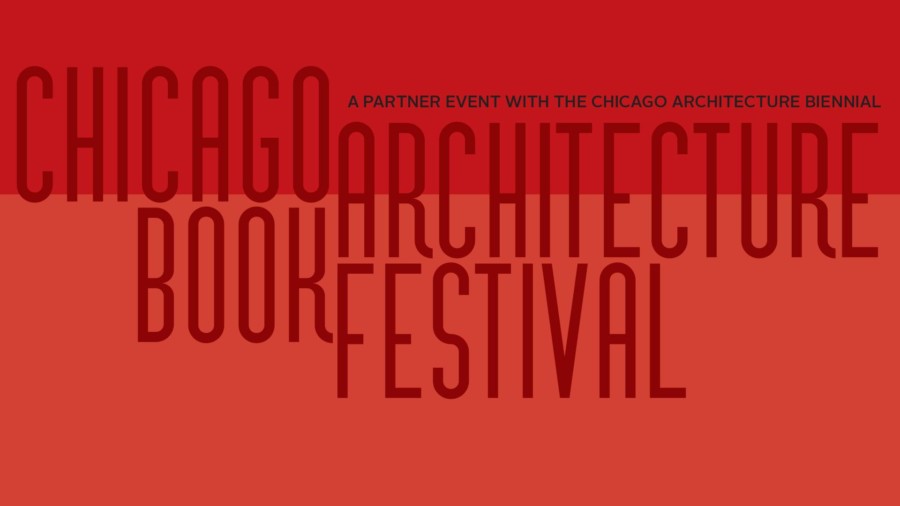Chicago Architecture Book Festival
@
1104 S Wabash Ave, Chicago, IL 60605
Opening Sunday, October 1st, from 10:30am - 5PM
The Chicago Architecture Book Festival is a partner event with the Chicago Architecture Biennial, and part of the 6th annual Chicago Book Expo. It is free and open to the public, and includes free refreshments. The Festival features four architecture-related panel discussions and one walking tour, along with numerous exhibitors selling architecture books and journals and promoting architecture events, including the Chicago Architecture Foundation, the Society of Architectural Historians, No Small Plans, SOILED, Flat Out, Fresh Meat, Oil Forest League, Eyes of the Cat Illustration, UrbanLab, Open Books, Greg Borzo, Patrick McBriarty, and After-Words Bookstore.
Events at the Chicago Architecture Book Festival include:
10:30am
Chicago Fountains Walking Tour (free, but Eventbrite reservations required)
Before the Book Expo opens, visit some nearby fountains with Greg Borzo, author of Chicago’s Fabulous Fountains (Southern Illinois University Press, 2017). Chicago has more than 130 outdoor public fountains, yet most of them are not appreciated — or even known. This tour will shine a light on a few fountains, revealing their surprising history and mystery. Be prepared for about 2 miles of walking.
1pm
Drawing No Small Plans
No Small Plans creators Gabrielle Lyon, Devin Mawdsley, Kayce Bayer, Chris Lin and Deon Reed will talk about their artistic process as a team and their aspirations for this new graphic novel. Inspired by a 1911 textbook version of the Daniel Burnham Plan for Chicago, No Small Plans follows the adventures of teens in Chicago’s past, present and future. Each frame is grounded in real places, stories and histories of Chicago. The Chicago Architecture Foundation intends to give away 30,000 copies of No Small Plans to Chicago teens for free over the next three years to catalyze civic engagement and equip Chicagoans to design the city they want, need and deserve.
2pm
Race, Public Art, and Architecture
How does race influence architecture and public art? Adrienne Brown, author of the forthcoming book, The Black Skyscraper: Architecture and the Perception of Race, will discuss the influence of race on modern architectural design as well as the less-well-understood effects these designs had on the experience and perception of race. Romi Crawford and Rebecca Zorach, co-editors (with Abdul Alkalimat) of The Wall of Respect: Public Art and Black Liberation in 1960s Chicago, will examine the history and influence of this lost revolutionary mural in Chicago.
3pm
Chicago’s Fabulous Fountains and River Bridges
Chicago is full of fountains, and many of them have interesting stories to tell. The lavishly illustrated PowerPoint will present some of the watery city’s most fun and fascinating fountains. Tour guide and author Greg Borzo will inform and entertain you with an overview and road map to Chicago’s most interesting and hidden water tossers. Patrick McBriarty’s multimedia presentation shows the importance of bridges in the development of the Windy City. Based on the award-winning book of the same title, learn how Chicago emerged as the Drawbridge Capital of the World with stories of floods, fire, politics, and bridge innovations.
4pm
Bowling: Water, Architecture, Urbanism
Bowling: Water, Architecture, Urbanism (the new book from UrbanLab founders Sarah Dunn and Martin Felsen) asks: Why, as a discipline, do contemporary architects counter huge crises with small ideas? Architects once thought and theorized the huge (both huge problems and huge solutions). In addition to unprecedented opportunities to design large-scale public works projects in the postwar period, architects in the 1950s and ’60s eagerly took on the large-scale cultural and environmental problems of the day. Bowling seeks to reposition the contemporary debate of what a city should be by exploring how city-scaled mega-forms can become an updated architecture-based urbanism—a conjecture of what a comprehensible city could be to combat (predicted) crises—through analysis and experimentation. Through the filter of productive contemporary crises, the urban-scaled architecture project can engage and exploit existing infrastructural conditions as a catalyst for urban invention.
Official Website
More events on this date
Tags: Chicago, chicago architecture biennial, Chicago Architecture Book Festival, Chicago Book Expo, Loop

« previous event
next event »